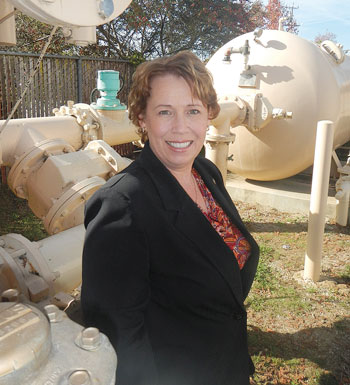By Kim Adamson

Welcome to the first article in a new monthly column about our regional water, focusing on challenges and opportunities. When I arrived in Santa Cruz County six months ago to become General Manager of Soquel Creek Water District, I knew I was faced with a challenge but had little idea how complex and urgent our water issues were becoming. Communicating our situation is difficult, so through this monthly column I plan to tell our story from the beginning. I’ll start with our problem, and then focus on the various issues the district is facing as we try to find a solution. Hopefully I can keep all this water talk from being too dry (no pun intended).
But now for the problem. In spite of our name, Soquel Creek Water District does not get its water from Soquel Creek. Nor any other surface water source for that matter. One hundred percent of our water is pumped from natural underground reservoirs, or aquifers, and then delivered to our customers’ taps through a series of pumps and pipes. Aquifers are layers of sand, gravel and rock beneath the soil that act like a sponge and transmit water.
In our county, 100% of the available water is the result of rain falling on our side of the Santa Cruz Mountains. That rain flows to local streams or infiltrates into aquifers like the ones supplying the District. If more water is being pumped out of the aquifer than is percolating back in, the water level of the aquifer will start to drop. This creates an “overdraft.” The aquifers supplying the mid-county area the District serves are currently experiencing such an overdraft.
We also face an even greater challenge — seawater intrusion. Being on our beautiful coast, our underground aquifers flow directly to the sea. As long as the water levels in the aquifers are high enough, seawater is prevented from entering the aquifers. As seawater intrusion reaches wells, they become contaminated with salty ocean water. Once contaminated, our water can no longer be used for either drinking or irrigation. Since this takes place underground, seawater intrusion can go undetected for years and continue to move inland.
The District has been working to address this problem for the past 20 years. We’ve installed a network of more than 80 monitoring wells that we test for signs of seawater. We also monitor the freshwater levels in these wells. Currently the mid-county area is surrounded by seawater intrusion. It’s been detected at Live Oak and La Selva Beach. It’s unclear how close to shore the seawater is between these two points. What’s clear though is that groundwater levels in our service area are well below sea level. This isn’t adequate to hold the seawater offshore so the wells of the District, as well as those in use by private owners, are in danger of contamination.
Sound like a District problem? The District currently pumps about 4,500 acre-feet of water annually to meet current community need. This is about half the total water being pumped from our shared aquifers each year. There are approximately 2,000 wells sharing our aquifers. They belong to small private water companies, other water districts, businesses and private residences. Since we all have straws in the same glass of water, our water supplies are all at risk from seawater intrusion.
Studies have shown that the District must reduce pumping to 2,900 acre-feet per year for at least 20 years to prevent additional seawater intrusion and restore groundwater to safe levels. This is a 35% reduction for residents who have already reduced their water use by 25% over the last decade through conservation. To reach these reduction goals, we can either obtain a supplemental water supply to make up for the reduced pumping, or institute mandatory conservation measures that result in an additional 35% reduction in overall use. For residents who already use about half the water of the average Californian, this is a very tall order.
Clearly, we have our work cut out for us to determine the best way to protect all the wells that share our water supply. We are currently hosting a series of public meetings to discuss our options. The next meeting will be February 4 at 7:00 p.m. in the City of Capitola Council Chambers where we will be discussing recycled water. We hope to have District and non-District residents who share the basin join us for a very informative presentation.
•••
Kim is the General Manager of Soquel Creek Water District, which promotes conservation and helps protect local water resources. The district offers free home/business water survey visits. Call 475-8500.